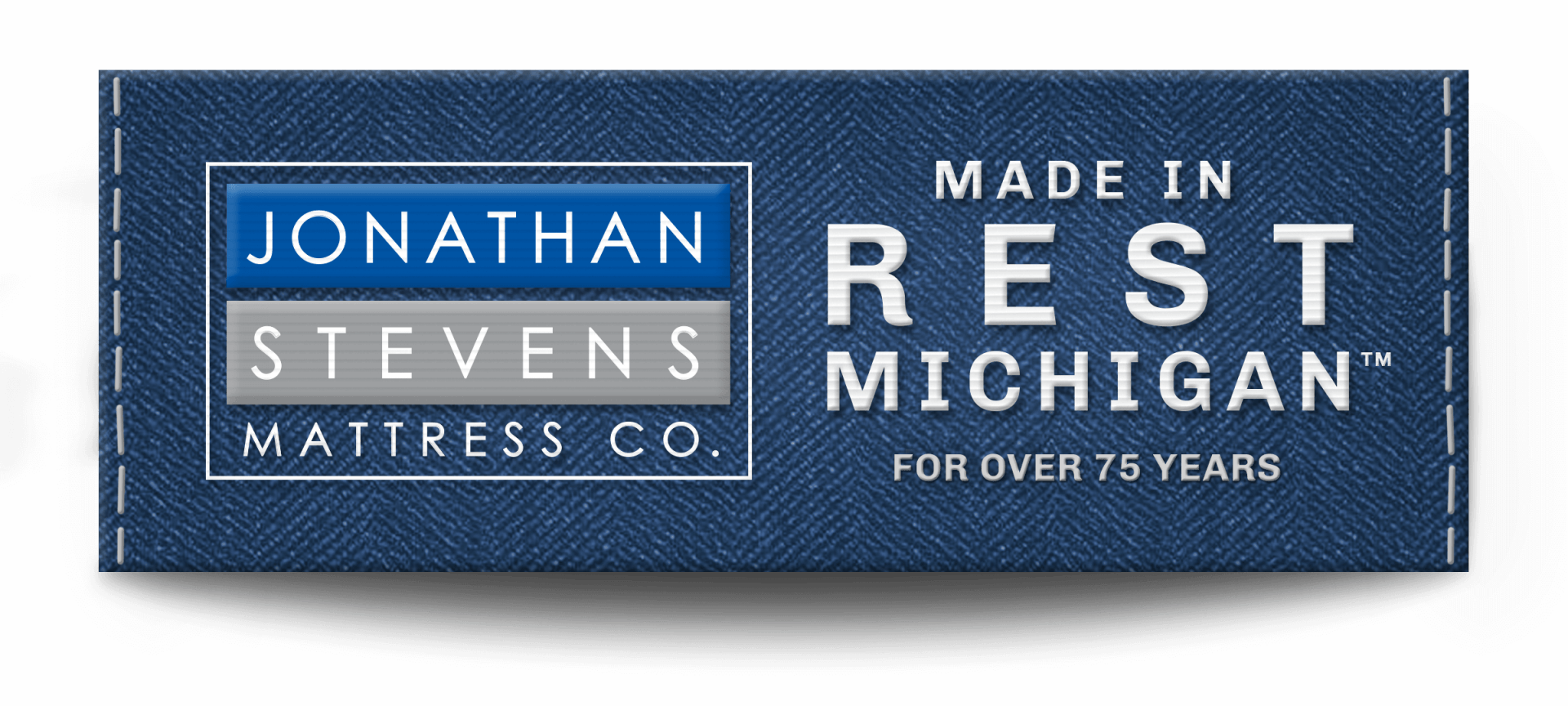Blog Layout
Mattress Glossary: A List of Common Mattress Terms You Need to Know
Jonathan Stevens • Jun 18, 2020
Understanding the lingo
It can be a daunting task to look for a new mattress without knowing some of the more common mattress terms. Mattresses have varying degrees of comfort, firmness, and density. Do you know any of those terms? If you don't, Jonathan Stevens has created this helpful article to help you out!
When doing your research, you don't have to keep searching for them on your internet browser. Everything you need to know is in one convenient location! Our following "mattress glossary" has 6 categories. Mattress terms within these categories were then alphabetized for your added convenience.
Contents
- Types
- Sizes
- Comfort
- Materials
- Accessories
- Shopping and care
Types
- Air mattress: Inflatable beds that can be adjusted to a desired level of firmness. These types of mattresses are not recommended for everyday use. They are made of cheap (rubber) material and have low-cost construction. This also makes them relatively inexpensive. They usually have a layer of foam on top for comfort.
- Bed-in-a-box: A mattress that has been rolled and then vacuum-sealed in plastic wrap to be shipped in a box. These types of mattresses will fully expand once out of the box. They are most common with online retailers.
- Hybrid: It supports a coil system and a foam type on top for comfort. These mattresses are the best of both worlds. It includes the support of an innerspring mattress and the comfort of various foam type to its users.
- Innerspring: A mattress that uses a steel coil system for support. It uses basic polyfoam or other soft material for the top layer to provide comfort. This is your traditional mattress type. Innerspring mattresses are more affordable than most other mattress types.
- Latex: Hypoallergenic and very durable for a mattress. It's made from either plant or synthetic materials. This type of mattress has received the most praise for its pain relief and comfort it gives. Due to the cost of the organic materials to construct the mattress, it is one of the most expensive on the market.
- Memory foam: Made out of polyurethane-based material. designed to conform to your body once pressure is applied. When pressure is removed, the mattress will form back into its original shape, hence it's given name. Very soft and popular in the market. There are many types of foam available, however it has a very specific feel to it that some users might not like.
- Organic: Mattresses made with natural fibers such as cotton, wool, silk, or latex. People that have allergies usually prefer this type of mattress.
- Platform mattress: A bed supported by bunkie boards that eliminates the need for a box-spring. It is usually positioned low to the ground.
- Waterbed: A mattress filled with water to provide support and comfort. These came into the market in the mid-80's and have become less popular since then. Modern waterbeds have a layer of foam or fiber on top, much like air beds.
Sizes
- Full-size: Commonly known as a double-bed. The mattress is 54 in. wide by 75 in. long. It is suited for an adult or teenager. It is best used for one person, although it can support up to two people at one time.
- King: The widest mattress available on the market. It measures 76 in. wide by 80 in. long. This bed is most suited for couples who need some space. The California King is 4 in. longer, but 4 in. narrower.
- Queen: A mid-size mattress. It is the most popular mattress size in the market. It measures 60 in. wide by 80 in. long. It is larger than a Full-sized mattress, but smaller than a King.
- Twin: A smaller mattress compared to other sizes. It measures 39 in. by 75 in. long. It is mostly used for growing kids and teenagers. They were originally used as a matching pair in a single room, the origin of its namesake.
- Twin XL: This mattress is 5 in. longer than a normal twin-sized mattress. This type of mattress is used for taller sleepers.
Comfort
- Comfort: This is subjective, but refers to the mattresses ability to relieve the pressure points on the user's body. It is one of the most important factors in determining a new mattress. Jonathan Stevens has 4 comfort types to choose from.
- Density: This affects the comfort and support of foam mattresses. It is also related to the quality of the mattress itself. The higher the density, the softer and more comfortable the foam is.
- Firmness: Offers great support. A mattress that "gives" a little is still firm, whereas a mattress that sinks or "hugs" is a soft mattress. Most stomach sleepers prefer a firmer mattress. Jonathan Stevens has Luxury Firm, Firm, and Extra Firm mattresses available.
- Indention Force Deflection (IFD): Sometimes known as initial load deflection (ILD). It is a process used to determine the level of softness or firmness on a foam mattress. The firmer the mattress, the higher the number. Softer mattresses are scored lower. These numbers are usually ranged from 8 to 16.
- Motion isolation: The ability of a mattress to isolate motion on one side of the mattress from the other. Memory foam is the best mattress for motion isolation. Innerspring is usually the worst.
- Neutral alignment: This refers to the body being aligned while lying on the bed. This is important to a healthy and good night's rest. Next to comfort, this is one of the most important factors in searching for a new mattress.
- Plush: Provides a relaxing feel to the sleeper. Mattresses featuring a plush top have materials stitched on top to provide the right amount of cushioning for side and back sleepers. It is ranked just below a pillow top according to comfort level. View Jonathan Stevens Plush mattresses here.
- Pillow top: An extra layer of cushion stitched on top of the mattress. A mattress with this top will appear thicker than most mattresses and will need deeper sheets. According to comfort level, it is the softest mattress available.
- Pressure relief: The ability of the mattress to provide relief to the human body's pressure points. They are common in the shoulders and hips. Without this relief, these points will experience low-circulation. This will cause pain and negatively affect your comfort level.
- Sleep positions: Unique positions of comfort people usually sleep in. This should be taken into consideration when searching for a new mattress. Mattress Clarity has more information on sleep positions.
- Support: This is also subjective. Support is determined how the mattress provides neutral (bodily) alignment.
Materials
- Border wire: Sometimes known as border rods or border support system. Refers to the wire around the perimeter of an innerspring mattress. This improves the endurance and edge support of the mattress.
- Coils: Used in innerspring or hybrid mattresses. These can vary in number and are arranged in tight rows across the mattress. They are constructed out of durable steel wire curved into a "coil" shape to distribute weight and absorb movement of its user.
- Gel: The gel is inserted into the memory foam mattress and used to regulate body temperature throughout the night. Mattresses that include gel within the foam can be found here.
Accessories
- Box-spring: A flat, box-shaped base (foundation) with springs on the inside. It is used to support the mattress from the bed frame. Its construction is wood with a cloth covering. It is meant to absorb shock, thereby reducing the wear on a mattress.
- Bunkie board: A thin, stiff board covered in upholstery that provides stability to a mattress. These are mostly used for platform beds or bunk beds. They are constructed out of wood and is intended to go unnoticed with a mattress.
- Edge guard: Provides extra support to the edges of the mattress. The material can be foam or wire placed on the perimeter of the mattress to give extra support. It can also prevent a sleeper from rolling off the side.
- Mattress frame: Also known as a bed frame, this is what supports the mattress from the floor. Some frames are adjustable to allow different angles for its users to sleep in.
- Mattress protector: A thin, waterproof cover for a mattress. A protector is often used to protect your mattress from stains and other unwanted elements.
- Mattress topper: These are placed on top of the mattress to add an extra layer of padding and comfort. There are a variety of mattress toppers to choose from, all based on different sleep preferences.
Shopping and care
- Antimicrobial: A material or substance applied to mattresses that inhibit the growth of bacteria, fungus, or dust mites.
- Dust Mites: Near microscopic insects that are common in older mattresses. They eat dead skin cells left over on the mattress and prefer more humid climates. Latex mattresses are known to be effective in keeping dust mites out.
- Mattress maintenance: Care conducted for your mattress. Jonathan Stevens has an article on mattress care. This ranges from common knowledge to tips learned over the years.
- Trial Period: Given by online retailers. The "sleep trial" period may vary, but it usually ranges from 100 to 365 nights. This allows time for the new mattress to be broken-in by the buyer.
- Warranty: A written guarantee from the mattress manufacturer given to the buyer. A warranty usually promises repair at minimal to no cost within a certain time-period. More information on mattress warranties can be found here. Jonathan Stevens has information of it's warranty here.
- White-glove delivery: This means your new mattress is delivered to your home and set-up in the room of your choice. Depending on the company, the old mattress will be removed from your home once installation is complete. Jonathan Stevens offers to remove the old mattress at no cost upon the delivery of a new mattress.
© 2024
All Rights Reserved | Jonathan Stevens Mattress Co.
Information on this website is for general information purposes only. Nothing on this site should be taken into legal consideration for any individual case. This information is not intended to create, and receipt or viewing does not constitute, Jonathan Stevens and client relationship. Email with any questions you may have regarding this website, or anything associated with it. This website was designed by Engagement Owl LLC

